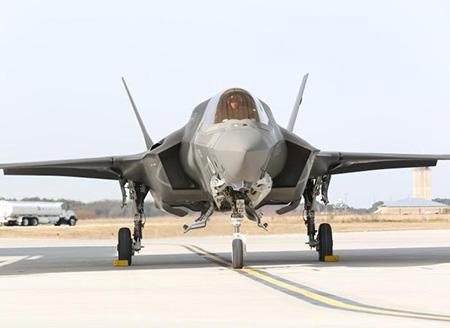Only eight of the 243 software features envisaged to declare Initial Operational Capacity require further verification - Undersecretary for Acquisition Frank Kendall writes in a report delivered to Congress - but the Pentagon plans to solve these problems in the next software and in any case by 2017. These shortcomings will not interfere with the missions of the Marines, the fighter is already able to satisfy, with the weapons provided for in the Initial Operational Capacity, all the needs of the Corps.
Kendall's report was also taken up by the Marines. We know the problems - says Paul Greenberg, spokesman for the Marine Corps - we are monitoring them, but they will not affect our missions also because they will all be resolved by the 2017.
With current features, the F-35B will allow Marine to perform Close Air Support missions as well. The marine wants to buy 353 F-35B, the most complex of the three variants that Lockheed Martin is making.
To date, only 37 F-35B have been delivered to the Marine. The United Kingdom and Italy have decided to invest in the B version, but are waiting for entry into service with the Marine Corps.
The final operational readiness inspection (Operational Readiness Inspection) began a few days ago at the Marine Corps Air Station in Yuma, Arizona, and will establish the F-35B's entry into service with an Initial Operating Capacity. The 'ORI' will last twelve days. Specific factors of the hunt are being analyzed by 134 and a final report will be drawn up immediately afterwards.
Although it is not for a single body to certify the Initial Operational Capacity of a weapon system, the Marine have no intention of adopting a machine that can not meet their requirements. In fact, for the Pentagon, the JSF could already enter service. If the outcome of the inspection matches the needs of the Marine, the F-35B will enter service (and in the history of aviation) with an Initial Operating Capacity.
During the ORI, the "Green Knights" of the Marine Fighter Squadron 121, will have to pass also three written exams: one of immediate action, a test of knowledge of the multiple choice plane and one of tactics. The pilots will also perform four real and three flights on the simulator. They too will be evaluated by the Marine Commission. At the same time, another team of experts will inspect both the maintenance programs and the supplies to the department to ensure that they can meet the needs of a ten F-35B operational squadron.
If the ORI were to finish regularly within the next week, it is conceivable that the Marine Corps may declare the Initial Operating Capacity for the same month, but there is no rush. In fact, the military reserves the right to consider the month of August to evaluate the hunt.
The Marine Reminder speaks clearly: "Declare Initial Operational Capability in July and, in any case, by December in case of extreme necessity. If Initial Operational Capacity was announced by August, it would be an absolutely negligible delay. "
The F-35B tested by the Marine is equipped with the Block 2B software, but it is a 'special' version of the fighter. In fact, the Marine squadron, called the '1 Group', presents most of the hardware modifications already implemented (and which will be integrated into mass production tomorrow) like the reinforced bulkheads. The aircraft could go into battle with a 'reduced' equipment: AIM-120 AMRAAM missiles, GBU-12 and GBU-39 bombs.
Unlike the V-22 Osprey that the Marine deployed in Iraq shortly after the 'IOC', the F-35 will not enter into war with the Islamic State. The first VMFA-121 squadron will be transferred to the Iwakuni base in Japan in January of 2017 to respond to possible crisis in the region.
Franco Iacch
(photo: Lockheed Martin)












